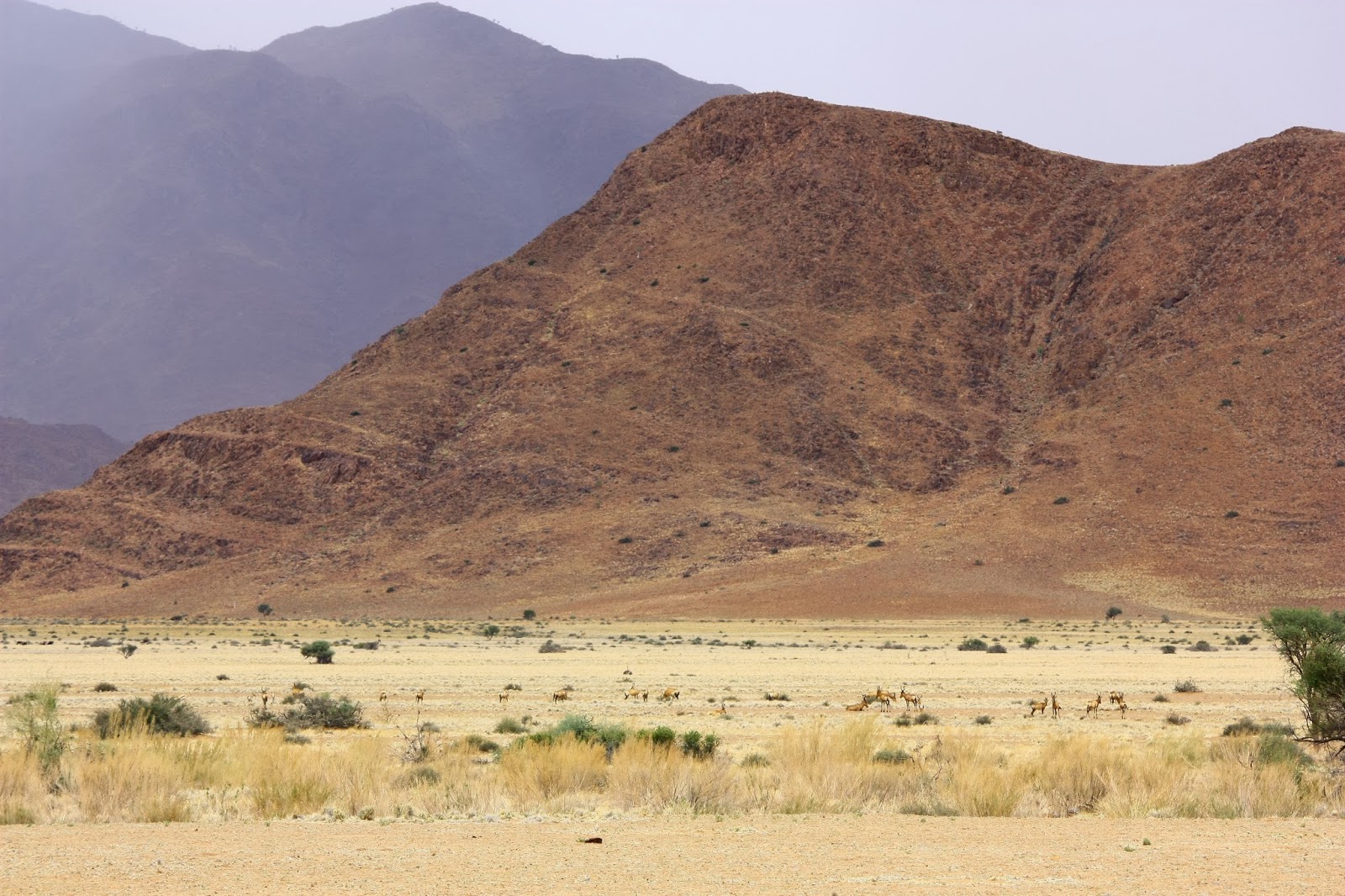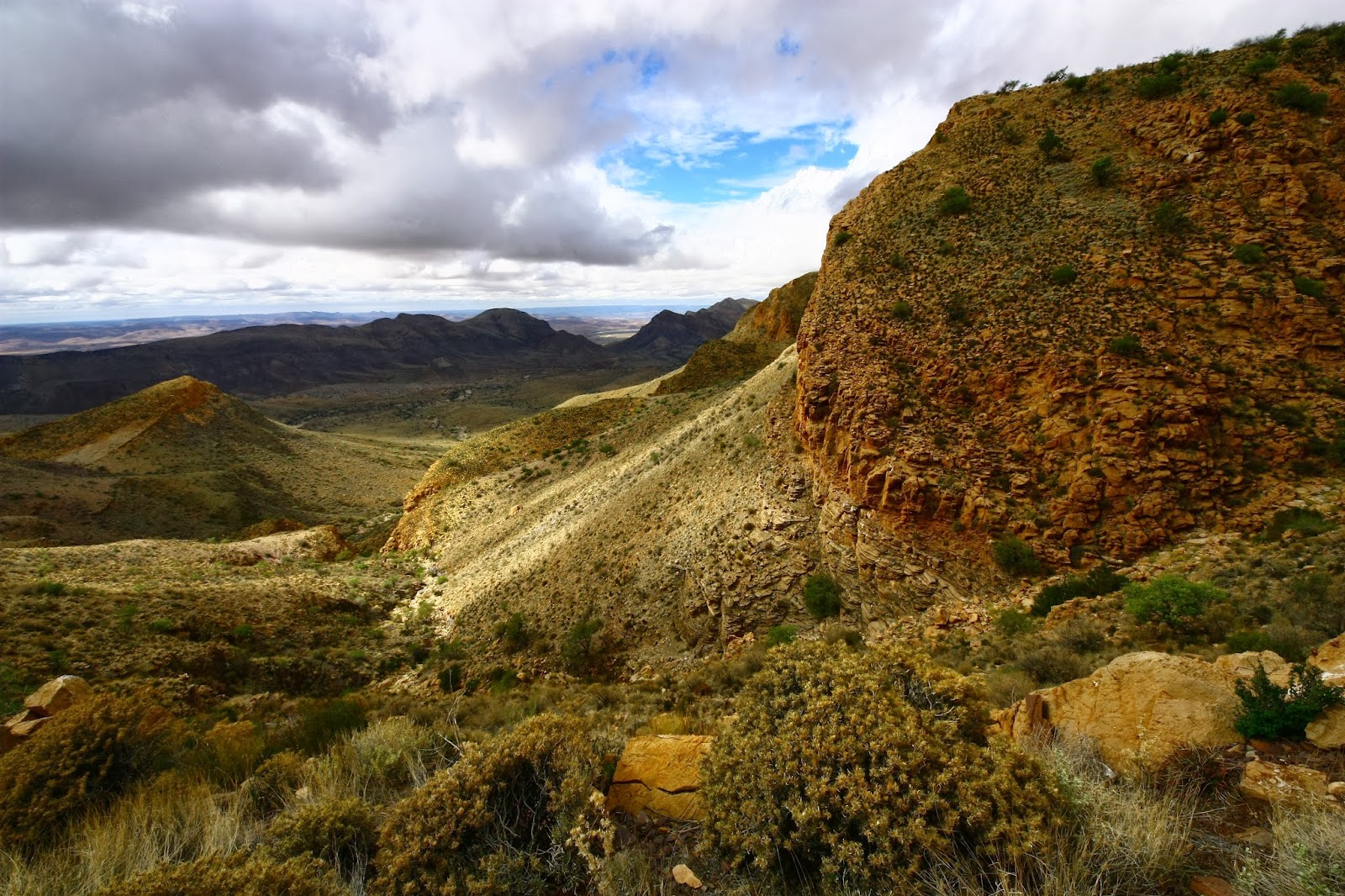We woke up at Namutoni rest camp before sunrise, packed the car and hit the road with hot coffees in hand to try and spot some game before moving on out of Etosha.
Our morning had a magical start as we watched black-faced impala and zebra bound out to their morning grazing spot just a few minutes after the sun rose. We watched a group of zebra fend off a hyena, and then watched the hyena track the zebra for ten minutes or so across the big plain before disappearing from view.
We made our way back west across the park, retracing our steps and seeing more oryx, wildebeest, and giraffe.
After leaving the park, we drove another four hours or so to the tiny outpost of Khorixas, beyond which the road turned to dirt. We were slowed by herds of goats and cows in the road; they always managed to run out of the way of the car, but usually not until the last second. We also saw people traveling the same paved and dirt roads by donkey cart. The axel of the cart and wheels were usually from a car.
We stopped at a petrified forest site to see the hardened remains of 250 million-year-old trees. These giant coniferous trees grew in central Africa during an ice age, and as the ice age melted they were washed down to north-central Namibia in floods. They were buried under silt and mud where they landed, outside the town of Khorixas, and after millions of years wind and rain erosion began to uncover the petrified wood. Locals first started finding pieces in the 1950s. One tree is nearly preserved at its full length of over 250 feet.
Our destination for the night was Abu Huab community-run rest camp, where we took a beautiful campsite next to the dusty Huab riverbed. Just a couple of weeks before desert elephants had come through and stepped on a pipe, making one shower unusable.
 |
| Black-faced impalas graze a few minutes after sunrise. |
 |
| A large male black-faced impala. |
 |
| These zebra were grazing in the same field as the impala. It was interesting to see how many animals chose to graze near each other. |
 |
| A kori bustard struts through the grass. |
 |
| A view of zebra walking across the pan under early morning skies. |
 |
| A troop of helmeted guinea fowl. These guys are common near our house too - we see at least one or two every time we go for a walk. |
 |
Oryx, or gemsbok, go grazing. We saw oryx all across the country.
|




























































